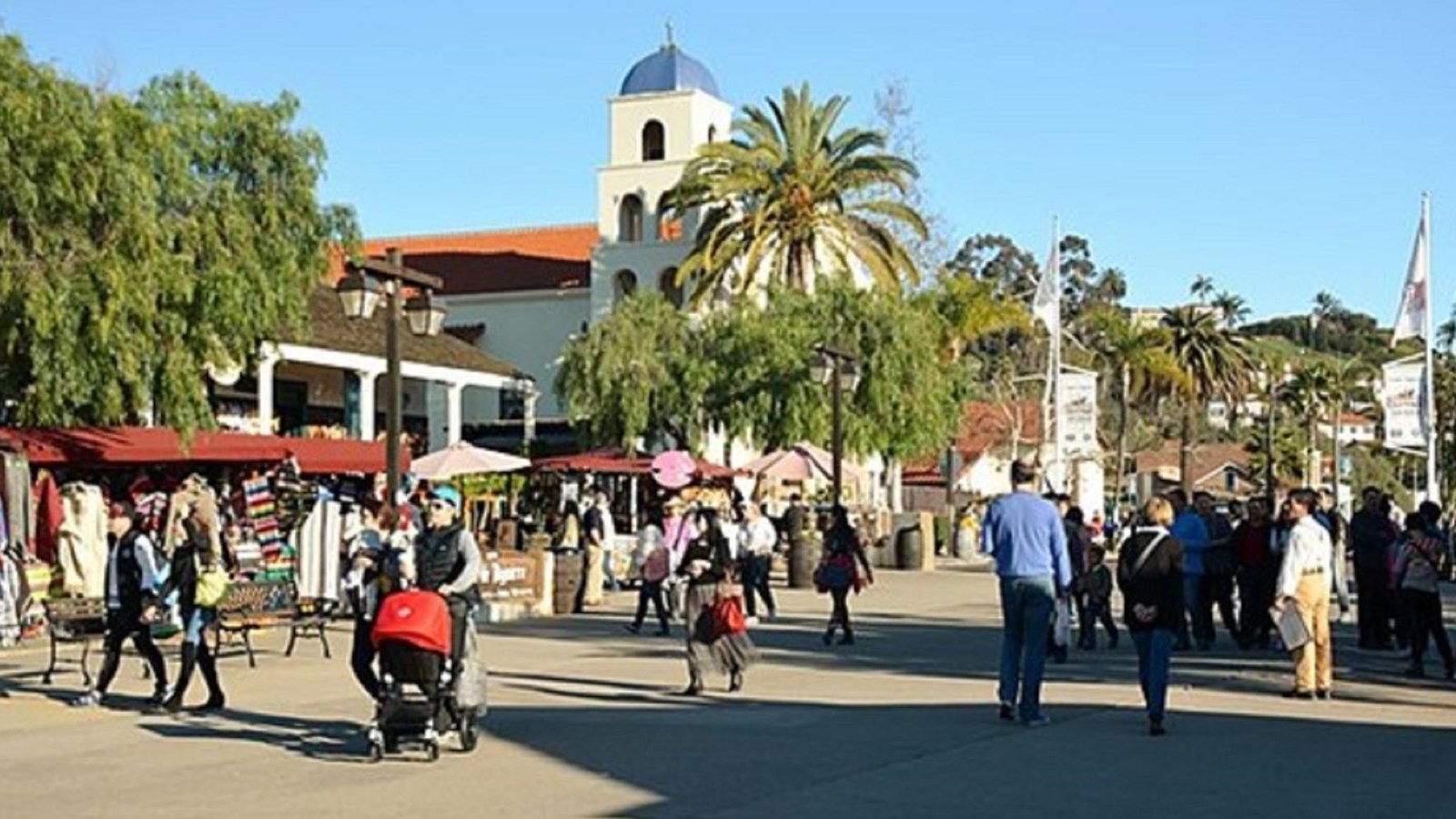Last updated: July 4, 2025
Place
Old Town San Diego State Historic Park

Quick Facts
Location:
San Diego, CA
Significance:
First colonial settelment in San Diego
Designation:
State Park; National Register of Historic Places
MANAGED BY:
Old Town State Historic Park preserves the original Euro-American settlement in San Diego, established in the 1820s when San Diego was a part of the newly independent nation of Mexico. The Kumeyaay Tribe has lived in this region since time immemorial and, though Spain first claimed ownership of this territory in the 1540s, their first settlers did not arrive until 1769 when they established a mission not far from today’s Old Town. In the 1870s, San Diego’s center moved to its current downtown location to better take advantage of the city’s harbor. As a result, many of the historic structures found here escaped the development pressures faced at older settlements throughout California. The state park, created in 1968, contains a mix of authentic restored structures and accurate reproductions that provide visitors with a vivid sense of what life was like in early San Diego.
One family who lived in Old Town during its heyday were Robert and Maria Israel (born Maria Machado), who served as lighthouse keepers at the Old Point Loma Lighthouse in our park for 20 years. Robert was a Mexican War veteran and skilled chairmaker who moved to Old Town in 1851 and worked a wide variety of jobs including saloon manager, justice of the peace, jailhouse keeper, and marshal. Maria and Robert lived in Old Town until 1871, when they moved to what is now Cabrillo National Monument. Maria's family had deep roots in Old Town. Her father, José was deployed to San Diego by the Spanish military in 1781; he ended up owning several ranches and became a city councilman in the 1830s. Maria's family had lived in San Diego since its Euro-American colonization began. The Machados were an enormous family with 15 children including Maria. Maria's oldest sibling, Juan, had an even larger family of 19 children and his landholdings included Ballast Point, not far from the lighthouse his sister would later tend. The large Machado family left a major imprint on San Diego's early history and their descendants can be found in our region to this day.
Among the many attractions in Old Town are museums like the Wells Fargo Museum which details the history of finance, the Gold Rush, and stagecoach transportation in 1800s California. The Seeley Stable contains historic stagecoaches and wagons that give visitors a sense of how transportation operated in San Diego's early years. Casa de Estudillo recreates the life of San Diego's elite during the 1820s. Other house museums include the James McCoy House, home of California's first sheriff, the Robinson Rose house, which served as a prison, school, and surgical operating room as well as a residence, and several homes where Maria Israel’s family lived such as Casa Machado Silvas and Casa Machado y Stewart which contain early 1800s furnishings. The Whaley House, built by Thomas Whaley in 1857 and reputed to be the most haunted house in San Diego due to the trials and tribulations that the Whaley family suffered, is also a major attraction.
Old Town's well-manicured grounds are a pleasant and atmospheric place to stroll and take in regular free entertainment such as mariachi bands and the Ballet Folklorico dancers at an outdoor stage. The park also features numerous restaurants, craft vendors, and souvenir shops where visitors can refresh themselves or purchase period objects or clothes.
One family who lived in Old Town during its heyday were Robert and Maria Israel (born Maria Machado), who served as lighthouse keepers at the Old Point Loma Lighthouse in our park for 20 years. Robert was a Mexican War veteran and skilled chairmaker who moved to Old Town in 1851 and worked a wide variety of jobs including saloon manager, justice of the peace, jailhouse keeper, and marshal. Maria and Robert lived in Old Town until 1871, when they moved to what is now Cabrillo National Monument. Maria's family had deep roots in Old Town. Her father, José was deployed to San Diego by the Spanish military in 1781; he ended up owning several ranches and became a city councilman in the 1830s. Maria's family had lived in San Diego since its Euro-American colonization began. The Machados were an enormous family with 15 children including Maria. Maria's oldest sibling, Juan, had an even larger family of 19 children and his landholdings included Ballast Point, not far from the lighthouse his sister would later tend. The large Machado family left a major imprint on San Diego's early history and their descendants can be found in our region to this day.
Among the many attractions in Old Town are museums like the Wells Fargo Museum which details the history of finance, the Gold Rush, and stagecoach transportation in 1800s California. The Seeley Stable contains historic stagecoaches and wagons that give visitors a sense of how transportation operated in San Diego's early years. Casa de Estudillo recreates the life of San Diego's elite during the 1820s. Other house museums include the James McCoy House, home of California's first sheriff, the Robinson Rose house, which served as a prison, school, and surgical operating room as well as a residence, and several homes where Maria Israel’s family lived such as Casa Machado Silvas and Casa Machado y Stewart which contain early 1800s furnishings. The Whaley House, built by Thomas Whaley in 1857 and reputed to be the most haunted house in San Diego due to the trials and tribulations that the Whaley family suffered, is also a major attraction.
Old Town's well-manicured grounds are a pleasant and atmospheric place to stroll and take in regular free entertainment such as mariachi bands and the Ballet Folklorico dancers at an outdoor stage. The park also features numerous restaurants, craft vendors, and souvenir shops where visitors can refresh themselves or purchase period objects or clothes.
